5 Ancient Gizmos That Seem Futuristic Even Today
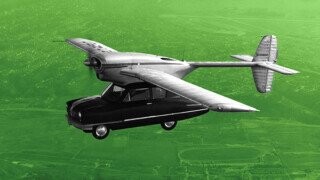
In the 1960s, The Jetsons showed us a world where a man flies a car to work, so he can push buttons for a couple hours a week. The writers put him in a flying car because that seemed futuristic. It never occurred to those writers that if someone’s future job consists totally of pushing buttons at a computer, maybe he wouldn’t need to commute to work at all. Nor did they consider that maybe, in the future, a man’s every morning wouldn’t start by peeling physical banknotes out of his wallet and handing them to his wife so she can shop at the mall.
So, looking back, The Jetsons seems quite old-fashioned. That applies also to the inane theme song, which feels the need to name each character but doesn’t ever mention that the show takes place in the future. That even applies to that flying car, which is what we call “retro-futuristic.” It’s an old-fashioned view of the future, rather than what the future actually brought.
Don't Miss
Still, if someone made that car today, that would be pretty cool, right? And if you learned that that car really did exist back in the 1960s, that would be crazy. As it happens, they did have flying cars back then — they even had them in the 1940s. They were never safe enough to make sense for mass production, but we had the technology.

Those decades in the middle of the 20th century had a bunch of other inventions as well that never quite caught on but seem revolutionary even now. Inventions like…
Self-Heating Beans
Let’s start with the most recent invention on our list. It dates back to the 1970s, when the military was looking at new ways to heat food. For centuries, soldiers had carried stoves with them, which was never particularly hard to do. The Brits even stuck tea-making facilities in every tank, because boiling is easy and important. But when a soldier is outdoors, a flame can take long to heat food, can go out in the wind or can be spotted by the enemy.
We needed a way to heat food without fire. The result of this project was the flameless ration heater, also known as the MRE heater. It uses oxidation, like flames do, but without all that pesky light.

The bag contains a reactive metal such as magnesium. You pour water in, which produces magnesium hydroxide, hydrogen gas and a whole lot of heat. This is not like pouring boiling water into a cup of ramen because the water here does not need to be hot. Any water will do.
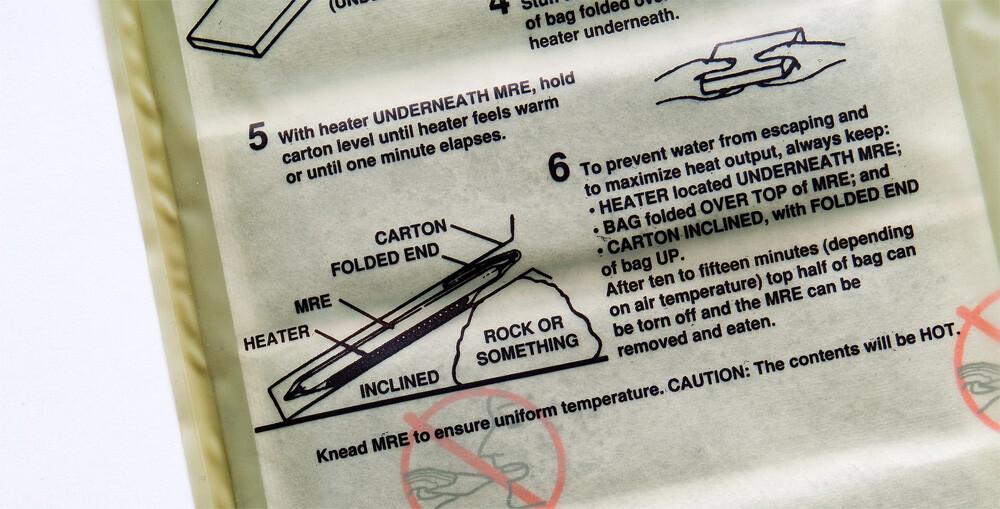
The military continues to use these today. You probably don’t see any application in your own everyday life, since even preppers and campers would prefer a stove, but this alternative chemical heating method still tastes of sci-fi. As proof, look to the Three-Body Problem books. In one of them, a character who already exists in what we’d call a sci-fi world, hibernates for a few centuries. He awakens in the future. Early on, he sees evidence of this new place’s advanced tech. It’s a packet of food that heats up without the use of a flame.
The Lit Cigarette Dispenser
If you travel back to the 1960s and show people there your phone, they won’t be surprised that you have a computer that fits in your pocket. That’s exactly what they predicted the future would bring, and the entire development of handhelds aimed to bring those predictions to life. No, here’s what would surprise them: You have one device that you carry with you all the time to do basically everything, and it doesn’t include a cigarette lighter.

“Not the sort of torch I was looking for.”
People used to smoke a lot, you see. Just look at car cigarette lighters, which were invented in the 19th century, almost as soon as people came up with the car itself. Today, with smoking no longer as common, that port in the dashboard remains, now called the “automobile auxiliary power outlet.” Various devices are designed to be compatible with it.
In the 1960s, some people figured that inserting a cigarette into this orifice to light it was too much of a chore. Enter the Ronson Robot-Liter.

Ronson
This invention for your dashboard wouldn’t just sit there and let you light your cigarette. It would light your cigarette for you and then dispense it. If this meant drivers devoted less thought or physical effort to the process of lighting up, perhaps this actually saved lives, since the risk of a car accident was so high in those days.

The Robot-Liter cost almost $300 in today’s dollars, and unfortunately, it only stored 20 cigarettes at a time. A typical 1960s driver would get through that many smokes in five minutes tops. So, once you take all the refilling into account, this wasn’t such a labor-saving contraption after all. But it was very cool, and we trust that a non-zero number of owners got laid immediately after showing it off.
Rocket Mail
Mail used to be carried by stagecoach, by boat and by train. In the 1930s, Austria pioneered a new mode of transport for letters: missiles. The mail service would load envelops into a tube, fueled by a strange new mixture of chlorate and nitrate powders. Send it up at the correct angle (65 degrees), and it would shoot off in the right direction. In time, it would deploy a parachute and then fall to its destination.

The distance typically covered by these rockets? One mile. Maybe two. Which was fine for sending a form semi-instantly between two close offices, but this exact type of rocket clearly would be of limited use.
Over the next few decades, however, rocket technology advanced a lot, because war is the mother of invention. By 1959, the United States was ready to show off its own spin on rocket mail. They sent 300 letters in a rocket from offshore to a naval base, a distance not of a single mile but of 100 miles. It traveled this distance in just 20 minutes.
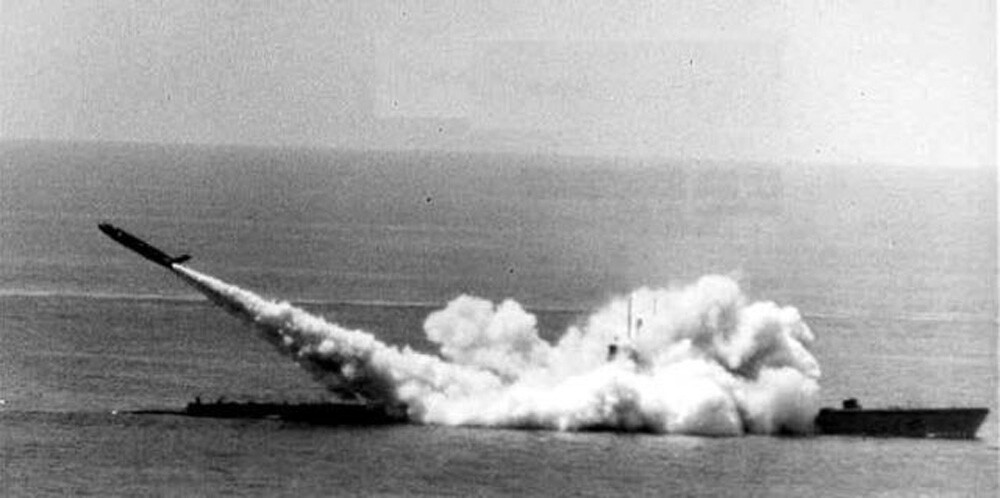
Now this really did seem like the way of the future. Surely we’d one day be sending rocket mail across the globe. But in the years that followed, we discovered we had another method of sending mail across long distances: airplanes. Planes could carry more cargo and were even faster than those 300 mile-per-hour rockets. And of course, if you merely need to send a message rather than a physical letter, we’d go on to use other forms of communication that are instant.
We do have other rockets, which travel 50 times as fast as that 1959 one. But they usually have explosives attached and destroy the target, which is something words should only ever do metaphorically.
The Hands-Free Toaster
Like all home appliances, toasters have advanced, often in pointless ways. We’re sure some of you have toasters that link with your pedometers, and which fail to function when the world’s internet crashes. The basic function of the toaster, though, remains the same. After putting the bread in, you pull down a handle to lower the bread and turn the heating element on. Then, once the timer runs out, the toast suddenly pops up, with an explosive jump you can hear from the next room.
But check out this toaster, which was designed all the way back in 1948:
You place the bread slices in the slots. And they lower, smoothly and gradually, on their own accord, without your having to push anything. Once the process completes, the toast rises. The toast slides back up, just as smoothly and elegantly as when the slices earlier dropped.
That’s because the weight of the bread is enough to send off a series of levers that lower the slices for you. Then, when the bread hits a target temperature (which you can customize with a dial), indicating a desired level of browning, a bit of metal moves and kicks off other levers, maneuvering the toast back up.
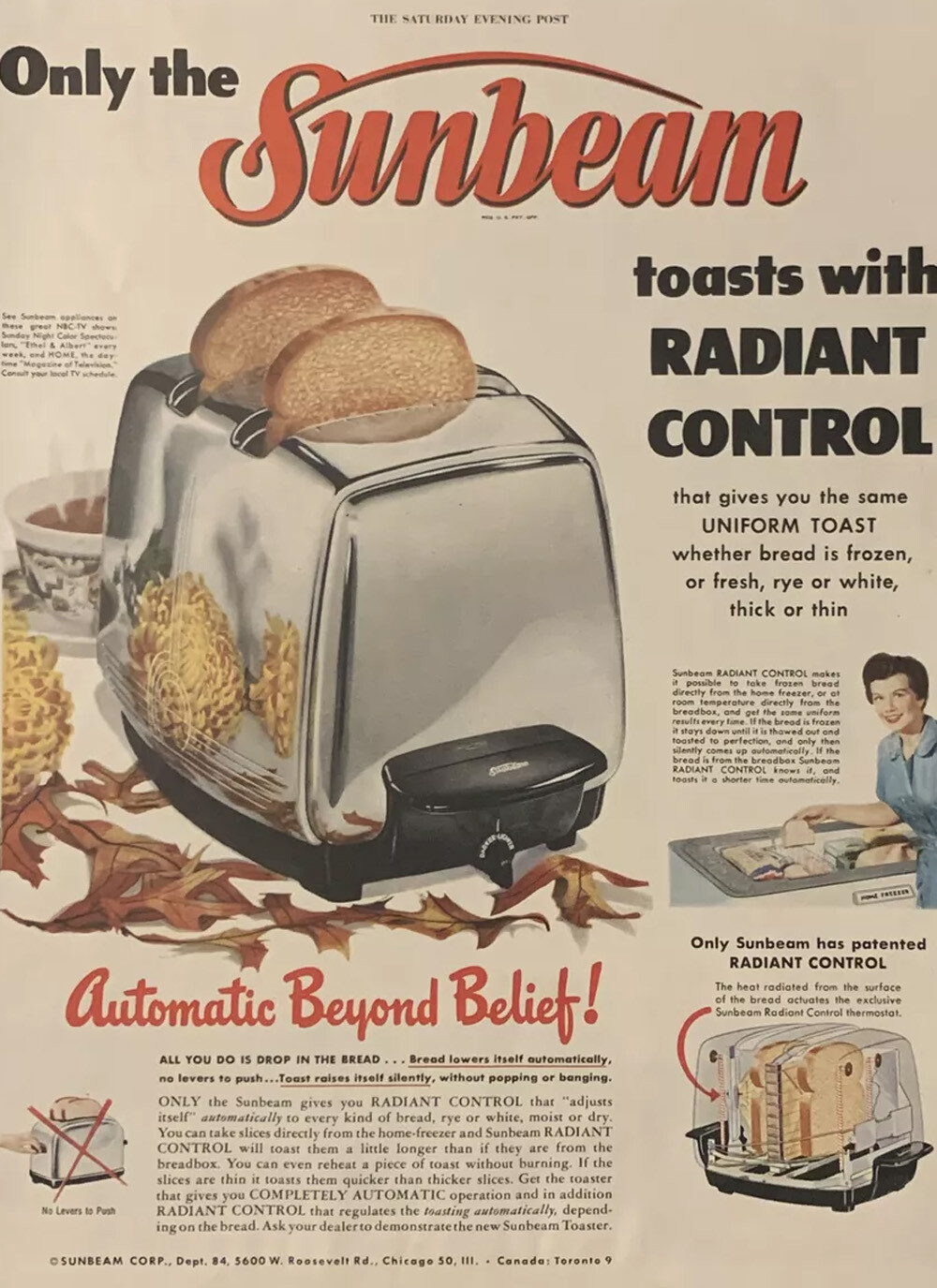
Sunbeam
The Sunbeam Radiant toaster sensed the target temperature purely through mechanical means, a bimetallic strip that bent to different angles with varying temps. Temperature sensing is a much better method for detecting if the toast is done, rather than using a timer. You know how every toaster you’ve owned ended up running hot over time, so settings that used to make golden toast now burn it black? That doesn’t happen when a toaster uses temperature instead of time.
This is so much better than current toasters that we can’t put a firm finger on why the design didn’t win out. The only reason we can think of that every company didn’t try making their own toaster like this is maybe Sunbeam’s patents were so broad that no one dared try.
The Hovering Vacuum Cleaner
Your vacuum cleaner sucks air from the ground. It blasts that air out through an exhaust port, after first filtering out all the dust. On an upright vacuum cleaner, that port might be at waist height and will blow all that air in front of you. But what happens if we instead direct that air downward? That would effectively attach jets to the bottom, and the device will now float on the air!
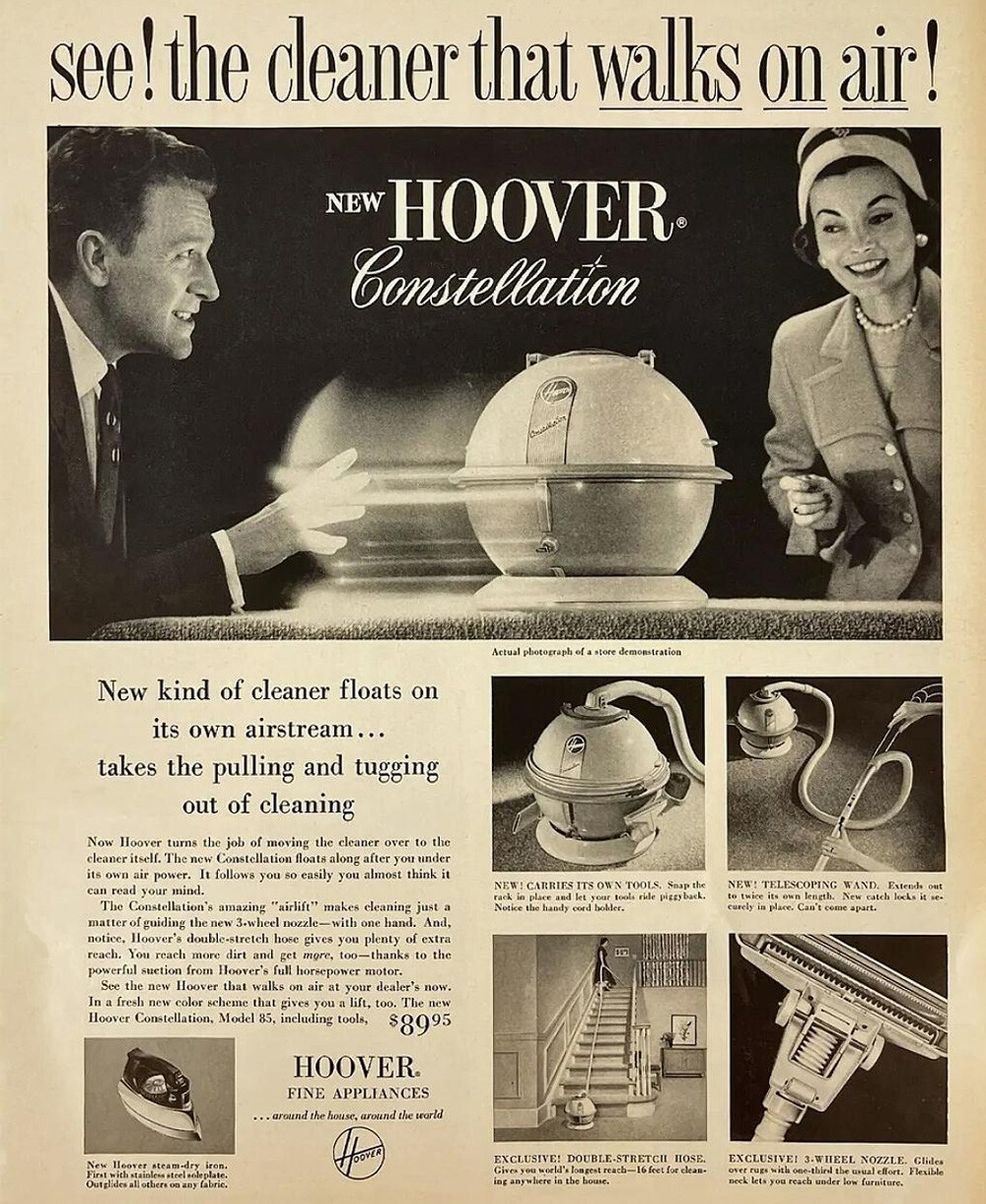
Hoover
Okay, the Hoover Constellation vacuum didn’t float very high. But the idea of a vacuum cleaner floating at all is pretty impressive. The above ad is from 1957, the same year Sputnik went up. Everyone felt the space age was upon us, and a zero-G cleaner was the way to go.
Besides feeling futuristic, a hovering vacuum offered a very practical benefit: You could drag it with much less effort. Vacuums weighed a lot in those days — you’d carry a nozzle to different parts of the room, but the main unit on the other end of the long hose weighed so much that dragging it anywhere presented a real chore. This all made the Hoover Constellation so attractive that people willingly paid more than a thousand dollars for it in today’s money.
As time went by, vacuums got lighter. We switched to upright models, or models with short hoses (so you can keep dragging the canister on the other end as you move), and with both these, a down-facing exhaust would present some problems. You don’t want fans blowing air close to where you’re trying to suck. That would scatter the immediate vicinity’s dust before you can hoover it up.
So, though you might be able to snag a Constellation on eBay, modern vacuums don’t use the jet idea. We just have to satisfy ourselves with alternate models that are much cheaper and also much stronger than anything they had in the 1950s. Or with a Roomba, an automatous vacuuming robot.
Hey, looks like we wound up in the Jetsons future after all.
Follow Ryan Menezes on Twitter for more stuff no one should see.